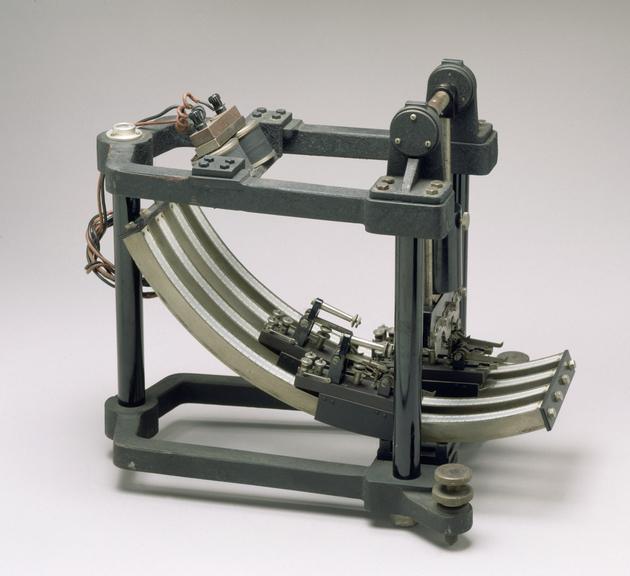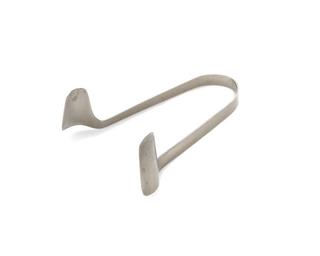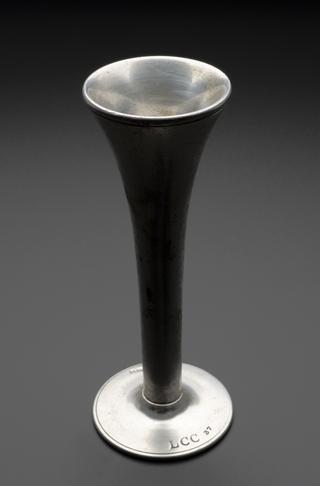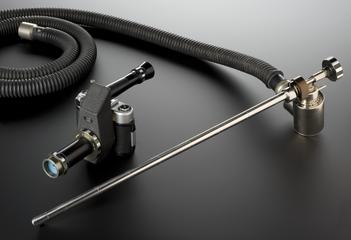
Helmholtz pendulum, Berlin, Germany, 1895-1910

Helmholtz pendulum, German, c.1900. A later, commercially manufactured version of the pendulum-myograph Helmholtz originally invented around 1850 in order to measure the speed of the nerve impulse in frogs. This instrument belonged to the Helmholtz Institute in Germany, and was confiscated at the end of the Second World War by Dr Stuart L. Cowan of the British military, who felt it could be used to advance research in the UK. It was donated by Dr Cowan to the Wellcome Trust in 1969.
The swing of the pendulum stimulates a nerve in a muscle. To calculate the speed, the nerve is stimulated at different distances from the muscle. Nerve stimulation and muscle contraction are recorded on smoked glass paper. Hermann von Helmholtz (1821-1894), the German physicist and physician, used a similar pendulum myograph of his design to study the speed of nerve impulses in a frog. His researches found that the speed of nerve impulses was twenty metres per second. Earlier estimates were far slower. The pendulum was made in the Berliner physikalische Werkstatten GmbH, which translates roughly to English as the “Berlin Physical Workshop”.
Details
- Category:
- Clinical Diagnosis
- Collection:
- Sir Henry Wellcome's Museum Collection
- Object Number:
- A600067
- Materials:
- iron, steel, copper, glass, textile, rubber (unidentified), metal (unknown), plastic (unidentified) and complete
- Measurements:
-
overall: 540 mm x 610 mm x 405 mm, 63.5 kg
- type:
- helmholtz pendulum
- credit:
- Ministry of Defence




